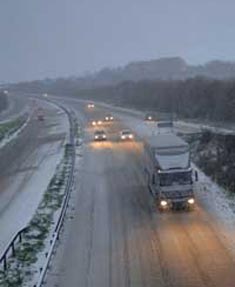Open Road lesson 1 – Moving Around
Outline
Students are to traverse a network in the most efficient manner possible. Consider different information to influence their decisions on the best route to take.
Objectives
By the end of the lesson:
All student will analyse a network and select the most efficient route
Most students will analyse a network and select the most sensible route using additional information
Some students will consider three factors to select the most sensible route at the most appropriate timing
Lesson plan
Main Body
Pupils should be given the road network worksheet and information sheet.
Activity 1
The objective for the pupils is to plan a route for the driver of a gritting lorry. Pupils use the information and the map to find the quickest route that allows all roads to be covered at least once. The path should begin and end at the depot (it is not possible to complete the route without overlapping). Pupils should add up the time taken to complete their chosen route and best solutions discussed. Note: some roads are A roads some B.
Activity 2
Pupils are now given the road temperature forecast graphs. The best time to spread grit salt is just before the road temperature freezes (discuss with pupils why this might be). Pupils should use the information given about the freezing time for each road to plot the best route for the gritter to take now.
Extension Activity
When a group have found their optimum route they should then use the timing cards from activity 1 to establish how long their route will take and decide what time the driver should start work/take breaks etc.
Plenary
Discuss how additional information can change the decisions you make.
Lesson resources
Open Road distances standard
Open Road distances advanced
Open Road network map
Open Road temperatures
Web page reproduced with the kind permission of the Met Office.


